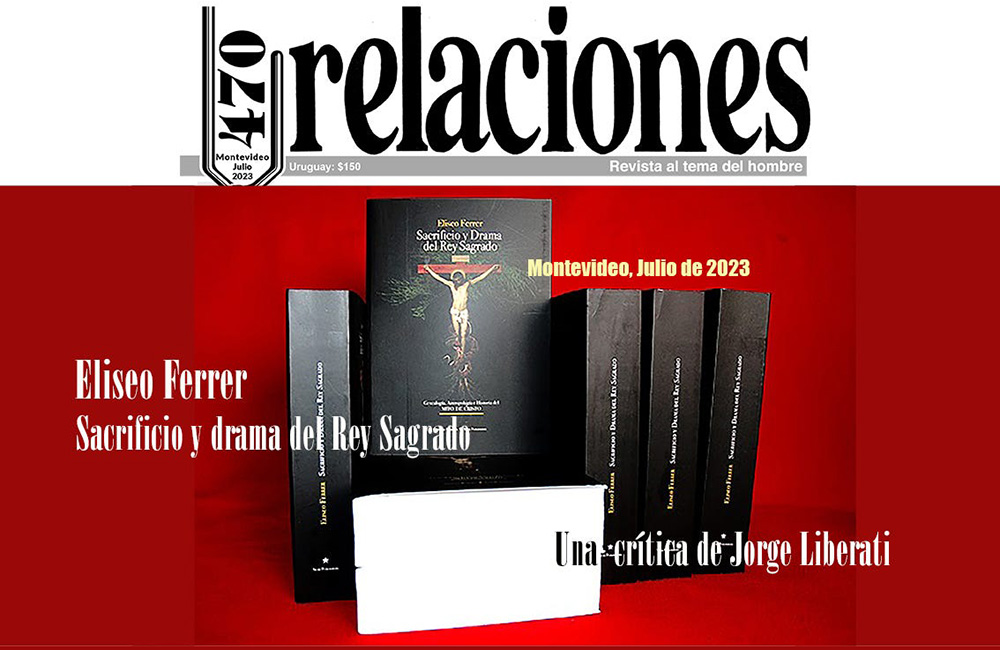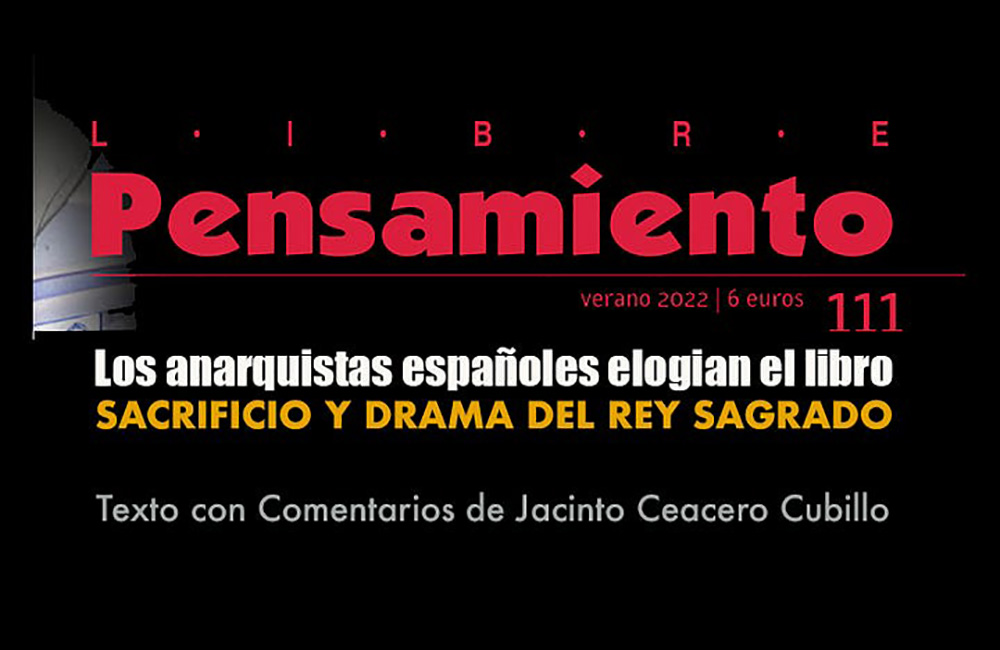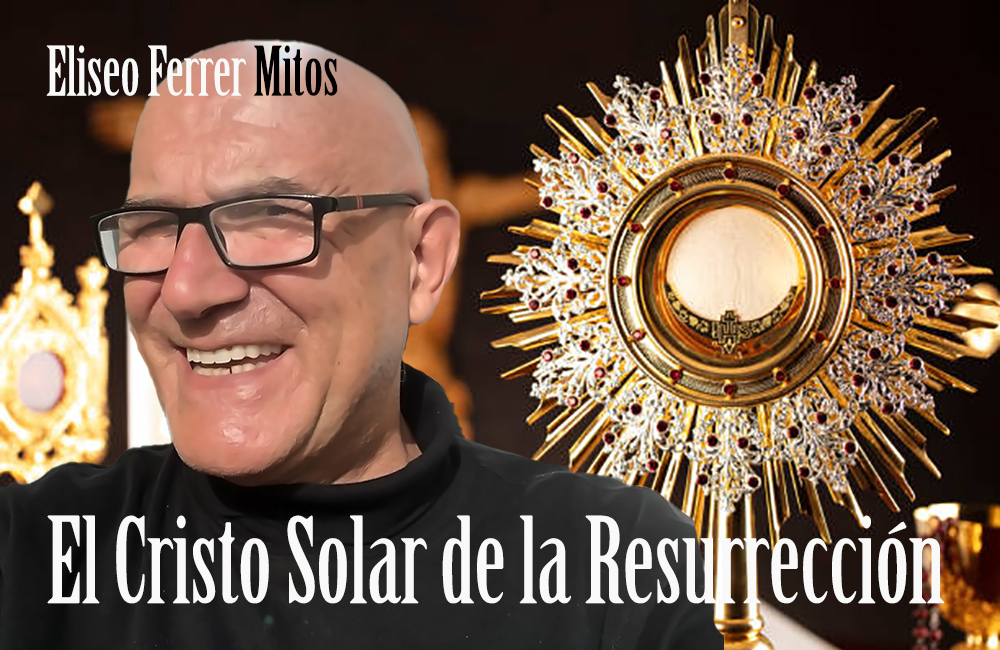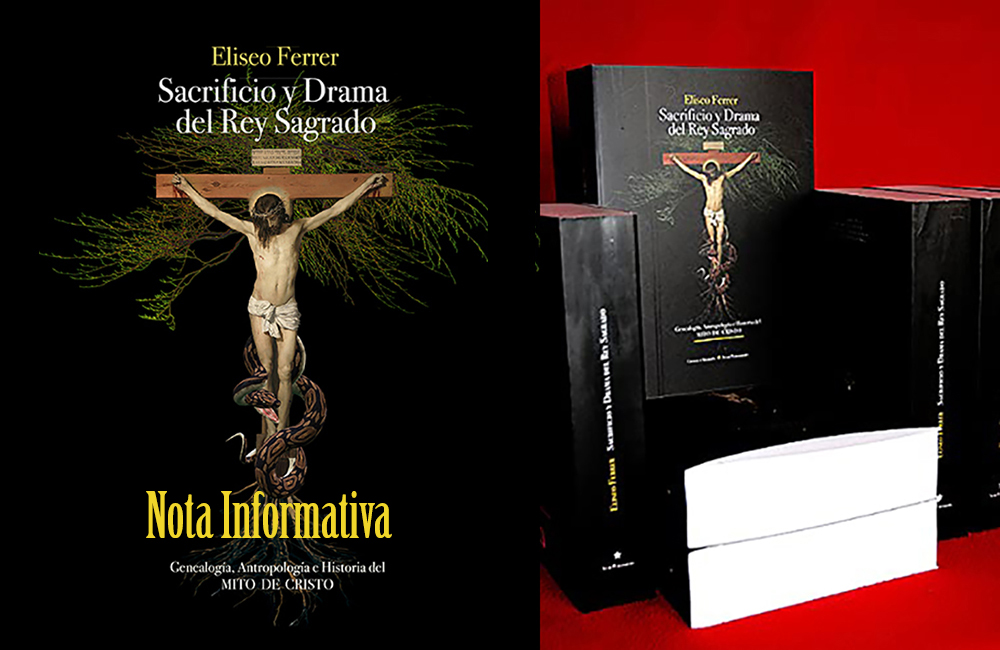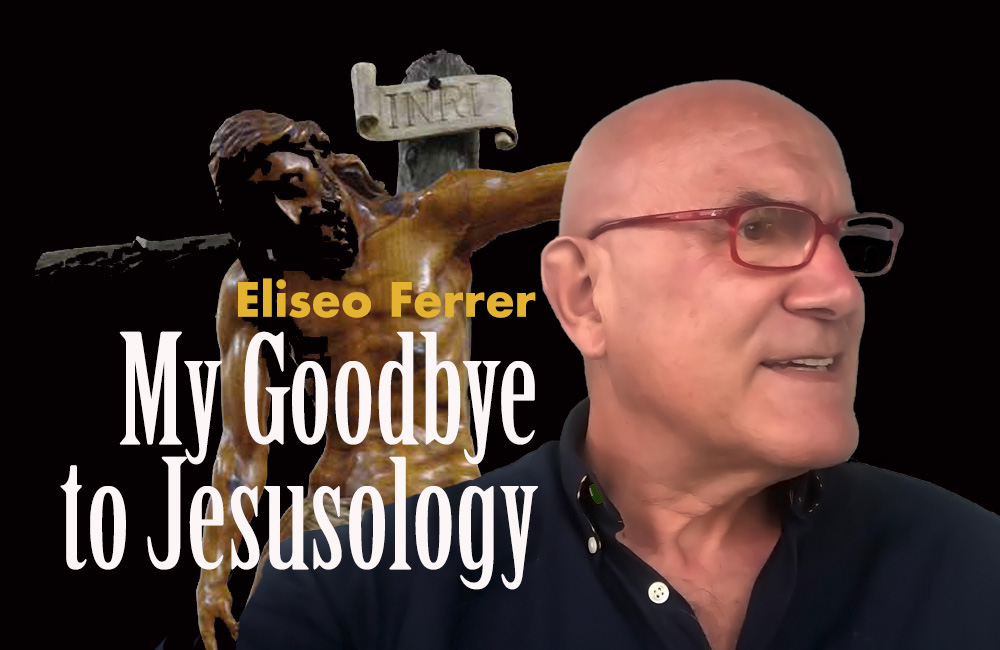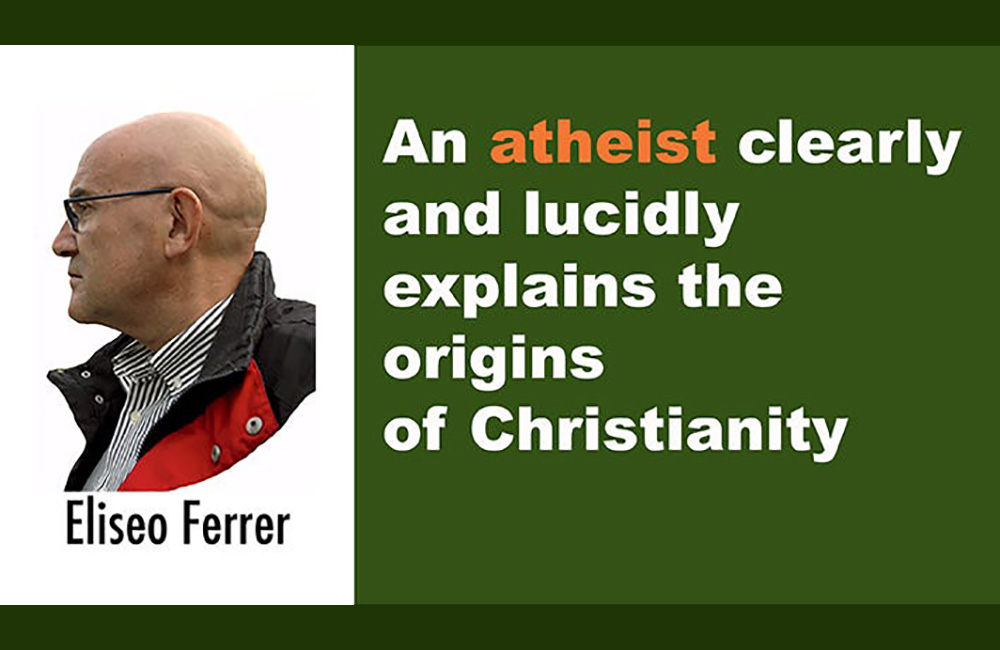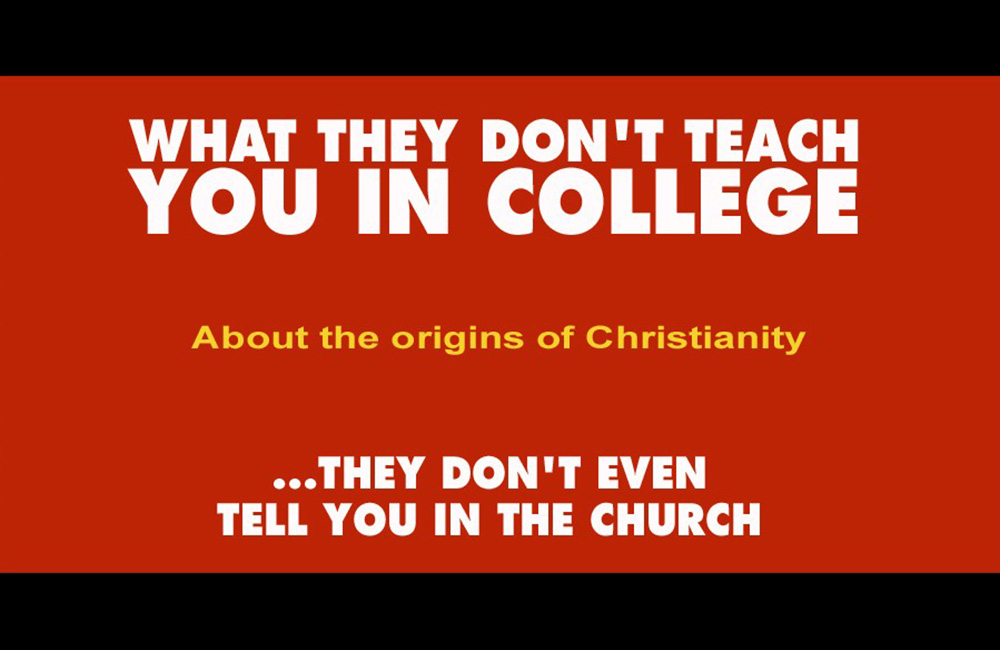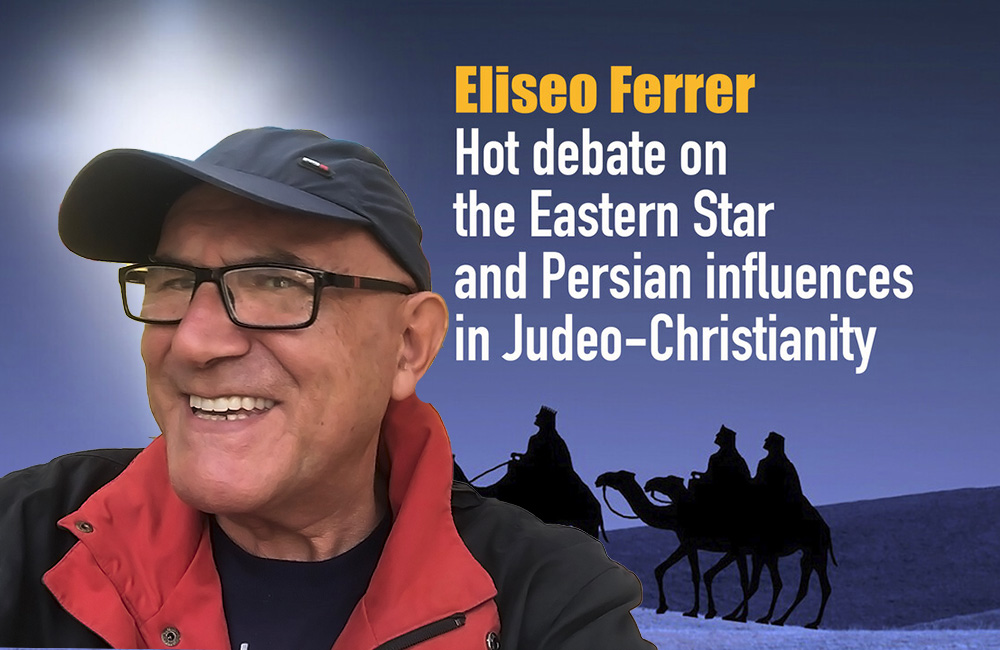© Eliseo Ferrer (From a materialistic anthropology).
Download PDF text with quotes and references.
Its since I can remember I have been listening to the most extravagant arguments about everything that refers to the literature of Christian origins, I am going to start by commenting on what was not (under any circumstances) the Star of the East, the Star of Bethlehem or the Star of the Magi, whatever we call this singular phenomenon recounted in the literature of the Gospel of Matthew.[1] That is to say, I am going to rule out what the symbolism of this Christmas light does not refer to, and which is mistakenly and ignorantly associated with the stars, to finally go on to explain the true meaning of the cultural and historical symbolism of its light. Well, as we will see, the Star of the East is just the opposite of what is generally attributed to it; and what it expresses is nothing other than the denial of harmony and the determining power of the stars and planets, dominated by archons and demons.
I have heard it said out there, as most readers will have heard, that the Star of Bethlehem could have been a Nova or a Supernova; that it could have been a comet and not a star (Halley’s Comet?), or that it could even have been some asteroid fallen from the sky. I even know those who, within that group of charlatans who associate the word «science» with any occurrence related to intuition or knowledge, discard the previous hypotheses and come to tell us about the planet Uranus: about the special configuration that it adopted with Saturn in the ninth year of the previous era and of which it is assumed that reliable records could remain. That is to say, we find ourselves with a pedestrian, ridiculous and untamed rationalism that, completely ignorant of the paths through which myths and mythology travel, seeks the «like» of YouTube with anachronistic and erroneous interpretations always derived from a strict reading. verbatim from ancient texts.
Finally, we find the most illustrious figures of that guild of rationalist charlatans who, invariably, put glasses, a tie and socks on the man in the caves. All of them constitute the vanguard of the secular scholasticism of the (not so) mysterious origins of Christianity and, curiously, they know everything about Jesus of Nazareth and nothing about Christ or Sophia; nor about the fleshly Verbum; nor about the mediating Logos; nor about the Logoi spermatikoi. All of them doctorally dominate the Jewish history of the Second Temple, which they call «science», and they do it with the same perspicacity and skill with which magicians handle the hat, the rabbit and the cane. And all of them too, completely ignorant of what in reality were the phenomena of Sophia-Wisdom, Jesus Christ, the Son of Man and Christianity, end up turning the offspring of Mary and Joseph into a large family and putting glasses, white socks and sandals on Jesus of Nazareth.
The truth, and without going into burlesque satire, is that many of these fraudulent «investigators» and charlatans discovered some years ago that, since their natural environment was «historical science» and not faith or theology , the explanation of the textual literalness of the Star of Bethlehem in the Gospel of Matthew should rest on a principle of rationality and never on the dark and pathetic fables of mythological allegorism. Because something important, from a scientific point of view, had to have happened at the time of the birth of Jesus of Nazareth. Something known at the time, of which could have been recorded in forgotten written records, and which Johannes Kepler himself rediscovered and communicated to the world in the early days of scientific development, well into the 17th century. I refer to the triple conjunction of Jupiter and Saturn, which occurred in the year seven before our era, according to which Jupiter would have moved through the constellation of Pisces to approach the planet Saturn. An apparently unimportant, unremarkable astronomical phenomenon… but determining and great (crucial, from my point of view, but in another order of things different from the stellar) when it comes to interpreting and understanding the Judeo-Christian culture that has moved the mental map and the concerns, the philias and the phobias, of the entire West for twenty centuries. So important, from my point of view, that it invalidates any reductionism of the type that we are referring to in these pages: the reduction, in short, as these ignorant rationalists do, of the triple planetary conjunction of the year seven before our era to the Star from the East, to the Star of Bethlehem or the Star of the Magi, as we want to call it. Let’s say, to understand each other clearly, that these methodological and mental indigents have heard chimes, but they don’t know where they come from nor do they know if the bells announce fire, celebration or decease.
It happens that, from my point of view[2] (and from the point of view of Carl G. Jung),[3] far from being a fragmentary, isolated or collateral phenomenon within the wide repertoire of issues and mysteries of primitive Christianity, the triple conjunction of Jupiter and Saturn from the year seven before our era constitute the hidden base, the ideological foundation, the leitmotiv and the ultima ratio of all subsequent New Testament construction. Well, according to Jung, there was a tradition and belief in some sectors of Judaism that the arrival of the Messiah would take place at that time when the planets of Jupiter and Saturn entered into confluence.[4] However, and since I do not want to deviate from my guiding thread, I am going to refer all those readers interested in this exciting subject to reading the chapter «Astrology and cosmology in early Christianity. Around the stars, the celestial calendar, the time of the messiah and the world sponsored by the bishops of the Church»,[5] from my book «Sacrifice and drama of the Sacred King»; in particular to the epigraph entitled «The time of the Messiah. The fish, Daniel’s prophecy and the triple conjunction of Jupiter and Saturn».[6] In these pages I relate, through an almost perfect fit, the theories of Carl G. Jung and a certain Christian Gnosticism on the role of the triple astral conjunction of the year seven before our era in the birth of Judeo-Christianity , the forecasts related to the time of the arrival of the Messiah established in the Book of Daniel[7] and the works of Pope John I and Dionysius Exiguus, at the beginning of the sixth century, to determine the new criteria of temporality established in the anno domini.[8] All of them, as can be observed, constitute matters completely removed from the literalness of the Gospels, alien to the narrative discourse of Jesus of Nazareth and completely foreign to the textuality of the shepherds, the portal, the Star of Bethlehem and the visit of the magicians. But these are very important issues that are all embedded and cast in concrete and steel within the depths of the foundation that generated the motives, the stimuli, and the midrash-pesher of the gospel narrative.
I have to add, so that my sanity is not doubted through the rupture that I suggest in this brief and scandalous summary, that the curious circumstance occurs, moreover, that the Jewish cabalists, for whom the figure of Jesus Christ lacked all Interest and meaning, due to being ignored, continued to announce the arrival of Israel’s Messiah throughout the Middle Ages, just coinciding with a new conjunction of the planets Jupiter and Saturn. The most evident and well-known case was that of the Portuguese Jew Isaac Abravanel, who, disregarding the Christianity of the Church, continued to explain in the fifteenth century that the Messiah would come when the planets Jupiter and Saturn were present in conjunction in the sign Pisces. «Abravanel -according to Jung- expected the coming of the messiah under the sign of Pisces; that is, in the conjunction of Jupiter and Saturn in that sign. And he was not the first to express such a hope. We find concordant data already four centuries earlier through Rabbi Abraham ben Jiyyá (died in 1136) and Samuel ben Gabirol (1020-1070)».[9] For Jung, the conjunction of Jupiter and Saturn meant the union of extreme opposites: «In the year seven before our era -he concluded- this famous conjunction happened no less than three times in the sign Pisces. The closest approach occurred on May 29 of that year, with a distance of only 0.21 degrees; that is, less than half the width of the full moon.[10]
In other words, from what we are seeing, and if it did not constitute an authentic mockery of Satan and a complete hermeneutic sarcasm, we would have to agree with those stupid charlatans who, dressed or not in scientific clothing, come to tell us that Jesus he was born (or should have been born) in the seventh year before our era, when the king who devoured creatures and murdered his own family was still alive; and that he was also born (or should have been born) in spring (in May, «according to Jung»), since the shepherds slept in the open in their in cattle corrals, caressed by the cool night breeze and under the twinkling lights of the stars.
But behold, that night when the Virgin Mary was in labor, a much larger and more luminous star came from the East, absorbed within its light every possible celestial luminary and settled on the roofs of Bethlehem: the city that the prophet Micah had chosen for the birth of the Messiah of Israel: «Because you, O Bethlehem Ephrathah, though you are small among the families of Judah, from you will come the one who will be the ruler of Israel, whose origin is ancient, from the days of eternity».[11]
Download PDF text with quotes and references.
Fragment of the book: «Sacrifice and drama of the Sacred King». THE EASTERN STAR AND THE SACRED MOUNTAIN OF PERSIAN TRADITION.
It should not surprise us that the birth of the promised messiah was announced in the literature of the Gospel of Matthew through the magi-astrologers[12] and the Eastern Star that marked the path to Bethlehem: a Star completely unrelated to the astral conjunction of Jupiter and Saturn and also completely unrelated to any astral consideration of a physical, material or mathematical nature. It was, in reality, an astral symbolism with which, contrary to the rationalist interpretation, the negation of the archontic power of the stars and planets was expressed, while announcing a superior power descended from heaven (the carnalization of the Word or Logos of God). That is to say, it was an astral symbolism (only in the form of a star) with which it was intended to legitimize and offer a letter of nature to the descent and arrival into the world of the true Savior; which indicated, at first glance, that the majority of the recipients of the message, probably overwhelmed by the power of the celestial signs, had to accept the message, had to be familiar with this language and had to correctly interpret the expressive force of its symbology.
In all the cultures of the time, and particularly in the Iranian tradition, the manifestation of the nativity of the cosmocrator-redeemer appeared dominated by the images of the star, the light and the grotto. According to Persian traditions, the xvarna shining above the sacred mountain was the heralding sign of the coming of Saoshyant, the miraculously born redeemer of the seed of Zaroaster and a virgin.[13] «The Persians considered the epiphanies of light, and, first of all, the appearance of a supernatural star, as the announcing sign par excellence of the birth of the cosmocrator and the savior. And since the birth of the future redeeming king of the world had to take place in a grotto —Eliade declared—, the star or column of light had to shine above the grotto. So it was very likely that Christians took the imagery of the nativity of the cosmocrator-redeemer from the persians and applied it to the birth of Christ.[14] In this sense «Monneret de Villard and Widengren also spoke out, for whom this reason was undoubtedly of Iranian origin. The Protoevangelium spoke of a blinding light that flooded the Bethlehem grotto; and when it began to withdraw, the Child appeared. Which came to indicate that the light was consubstantial to Jesus, or it was one of his epiphanies.[15] However, according to Eliade, it was the anonymous author of the Opus imperfectum in Matthaeum (Patr. Gr. LVII. 637-638) who introduced new elements of this Persian symbolism into the Christian legend. «According to him, the twelve Magi lived in the surroundings of the Mount of Victories. They knew the secret revelation of Set concerning the coming of the Messiah and every year they climbed the mountain, where there was a grotto between springs and trees. There, they worshiped God in a low voice for three days, waiting for the appearance of the star. And this one finally appeared in the form of a child, who told them to go to Judea. Guided by the star, the Magi traveled for two years. And, on their way back, they recounted the prodigy they had witnessed».[16]
And similar approaches were maintained by Anders Hultgård, for whom it was necessary to rule out that the star of the East had been the result of an astronomical phenomenon that occurred at the beginning of our era, as is commonly believed. For this author, an interpretation based on the Persian traditions about the magicians would be more consistent and would fit better with the evangelical account. «The Greek text of Matthew did not speak of astrologers in general, but of magicians (Gr. magoí) from the East, that is to say, Mazdean priests of the time. These characters -Hultgård pointed out- had observed the rise of a star that predicted the birth of the King of the Jews. And this was the result of the adaptation of an Iranian legend related to the birth of the savior king who represented the god Mithras. Such a legend was preserved through a slightly reworked form in some early Christian texts, notably the Opus imperfectum in Matthaeum and the Chronicle of Pseudo Dionysus».[17] For Hultgård, as for Eliade and Widengren, both texts clearly related the magicians to Persian mythology, and described the annual meeting of the Mazdaean priests at the top of a mountain where there was a cave, trees and a spring: the sacred mountain… There, they waited for the appearance of a star and the descent of the figure of the celestial savior, who had to descend through the column of light formed by the star itself.
We need not remember that wisdom and holiness were represented in the Persian tradition, as in the ancient Indian tradition, by the blinding luminosity arising from the sacred fire.[18] Therefore, there is no doubt that, in terms of narrative discourse, the luminous element of the Star of Matthew could fit, beyond the scriptural references, within the Indo- Iranian cultural tradition. The star of Bethlehem informed the Chaldean wise men of the prodigious birth of a savior king, who, from distant lands, undertook a long pilgrimage to glorify the newborn child. The transformation of these Chaldean magicians into kings of the East would be part, according to some interpretations, of the popular fables developed later under the influence of Greco-Egyptian fantasy.
Coincidentally, the feast of the Magi, which is celebrated throughout Christendom on January 6, and which in the East was the date of the birth of Christ, was also the date on which the festival of the birth of the new aeon was celebrated in Alexandria. (a syncretic personification of Osiris and the Sun) in the temple of Core, «the Maiden»; that there he was identified with Isis, of whom the appearance of the star Sirius (Sothis) had been the most awaited sign for millennia. «The rising of the star heralded the rising of the waters of the Nile —say Campbell—, through which the world-renewing grace of the dead and risen lord Osiris was to be poured out upon the earth».[19]
Moreover, since ancient times, Israel’s messianic hope had been linked to the appearance of a star. Even from the most distant antiquity, not only in Judaism and in the Indo-Iranian tradition, but also throughout the Mediterranean East, the birth of the cosmocrator king, goddess or savior, had been identified with the appearance of a star in the sky. What was not without being present in the Jewish Scriptures, as proved by Balaam’s prophecy when he stated: «I will see it, but not now; I will look at it, but not closely: A star will rise from Jacob, a scepter will rise from Israel. He will crush the temples of Moab and the skulls of all the sons of Seth».[20] According to Justin Martyr, another prophet, Isaiah, announced the same thing in other terms: «A star was to rise from Jacob and a flower was to grow on Jesse’s rod. And this luminous star that rose, this flower that grew on Jesse’s rod, was Christ the Savior».[21] Another reference by Justin also provides us with new evidence: «And that He would rise like a star through the lineage of Abraham, Moses manifested it when he said: «A star will rise from Jacob and a leader from Israel». And another Scripture said: «Look at a man. His name is East.» Rising, then, in the sky a star as soon as Christ was born, as it is written in the memories of his Apostles, recognizing him by it the wise men of Arabia, they came and worshiped him».[22]
Nor should we underestimate the fact that two quotes referring to the «morning star» appeared in the Apocalypse, loaded with meaning and substance. The first of them[23] was preceded by a text from the Psalms: «I will give him power over the nations and he will rule them with an iron scepter».[24] The second, much more eloquent and expressive, identified the revealer of Wisdom with the morning star: «I am the root and lineage of David, the bright morning star».[25] That is, he identified Jesus Christ with the rising sun or with the morning star; that is, the planet Venus or the star of the goddess Ishtar. So it seems possible, even, that (beyond the solar cult) the narration of the Apocalypse picked up a distinctive sign of the narration of the ancestral and archetypal myth that, coming from the Mesopotamian world, we refer to as «Sacrifice and drama of the Sacred King»: the one that would belong to the mythology of the goddess Inanna-Ishtar and her son-lover Dumuzi- Tammuz, dozens of centuries before the legends of the childhood of Matthew and Lucas. Well, it is not unreasonable to think, according to the text of the Apocalypse, that the star that appeared over Bethlehem in the narrative of the Gospel of Matthew could have been a cultural projection of the luminous planet that three thousand years before was presented as the star of Ishtar, Inanna, sacred shepherdess and guardian of the cowshed, who gave birth to a son who was called «shepherd», «lord of the sheepfold», «lord of the net» and «lord of life».[26] Jesus was also a shepherd, Poimên, like Dumuzi, Tammuz, Attis and Osiris (Poimên leukôn astrôn),[27] and at the same time a lamb: representations that perfectly fit the end of the era of Aries and his symbolic death, which also coincided with the zodiac sign of the Easter celebration.
However, the matter related to the association of the birth of Christ with the Persian symbolism of the Star (which takes precedence, from my point of view, against other cultural influences) is explained in philosophical depth in a passage by the Gnostic Christian Theodotus;[28] a passage collected by Clement of Alexandria and where the star was presented as an allegory of the presence of the revealer of Wisdom in the world. The text first described the nature of destiny, which resulted from the movement of the celestial bodies in the purest deterministic style: «Thus, through the action of the fixed stars and the planets, the invisible powers, guided by those stars, govern the generations and preside over them».[29] But «from this dispute and struggle of the powers, the Lord frees us and procures peace, far from the combat of the powers and the angels».[30] «That is why the Lord descended – clarified the Gnostic Theodotus – to bring peace to those who have come from heaven and to those who have come from earth. […] That is why a strange and new star rose on high, annihilating the old disposition of the stars, shining with a new light not of this world, which traced new paths of salvation, like the Lord himself, Guide of men, who descended to earth to change from fate to his Providence those who believe in Christ».[31]
Of course, the counterpoint, at the other extreme of the opposites, to this interpretation of the Star of Bethlehem (as a rupture of the necessity and harmony of the cosmic materiality of the archons) is found, in the gospels, in the solar eclipse and the consequent darkening of the earth,[32] impossible at Easter time and which announced the death of Christ. A manifestation of heaven that we know today goes beyond the merely mournful dimension of a literal reading of the texts, to transport us to a theological and symbolic depth that only finds accommodation in the context of the cosmic Christ and in his liberating action (in the luminous and gnostic way ) on the fatality of the determinism of planets and stars. «In Pliny [for example] we find a similar episode, which he claimed to have been observed in Rome in his days. We find ourselves before the transposition of a supposed miracle, originally conceived to glorify the new pagan Golden Age that constituted the reign of the deified Augustus; a personality to which the miraculous abolition of astral fate was also attributed».[33] All of which was made clear, in the New Testament, in the liberating announcement of the arrival from heaven of the Son of Man and the birth of a new aeon: «But immediately after the tribulation of those days, the sun would darken, and the moon would not give its glow. The stars would fall from the sky and the powers of the heavens would be shaken. Then the sign of the Son of Man would appear, and at that time all the tribes of the earth would mourn, and they would see the Son of Man coming on the clouds of heaven with power and great glory».[34] Let’s say that the liberation and rupture of the archontic (material) order of the stars and planets presupposed, within the literature of Gnosticism and certain Jewish mystical and apocalyptic sects, a whole challenge to the mathematical order of the movement of celestial bodies, that could only come associated with the figure of the Savior and the revealer of the Wisdom of God.
The theme of Fatum defeated by divinity, in the last instance, by a divine intervention that had to suppress the power and force of the movement of the planets, masters until then of the destiny of men, already appeared in the Book of Enoch, it was insinuated in other texts of apocalyptic literature, it was the reason for the soteriology of Gnosticism and also a very important part of certain ideologies of the pagan world. The destruction of the power of the planets and the liberation from the shackles of destiny through a Savior (Jew or pagan) constituted the basis of the apocalyptic myth that signaled the establishment of a new cycle of relations between earth and heaven, liberated the the just and the pious from the tyranny of the archons. «Pre-Christian Gnosticism would adopt this same theme, mentioned with the same significance in the Holy Book of Eugnosto. Christianized Gnosticism, in turn, would inherit it, but only after transforming or repeating it, in order to relate it to the strange event [the descent of the Son] which it claimed to have taken place at the beginning of our era».[35]
The star of Bethlehem that announced the birth of Jesus; the darkening of the sun that, in full Easter, announced the death of Christ; the birth of a virgin mother of the Savior;[36] the adoration of the magi; the birth in the manger; the death of the innocents; the flight into Egypt, etc., etc., were just some of the many fabulous elements that, in their cultural context, expressed a symbolic «truth» that the Gospels and part of Gnostic literature shared with the set of archetypal features of myth. of Persian origin of the descended savior.[37] And, within which, the Star, as a symbol of his birth and as a sign that challenged the cosmic fatality of archons and demons, appeared as an irreplaceable element in the myth of the birth of the Child God of many ancient cultures.
© Fragment of SACRIFICE AND DRAMA OF THE SACRED KING. / Pp. 609-614. Madrid, 2021 (Spanish edition. No English translation available).
_________________________________________________
[1] Mateo. 2. 2-11.
[2] Cf. Eliseo Ferrer. Sacrificio y drama del Rey Sagrado. Genealogía, antropología e historia del mito de Cristo. Madrid, 2021.
[3] Carl G. Jung. Aion. Contribución al simbolismo del sí mismo. Barcelona, 2011.
[4] Op. Cit. 170-202.
[5] E. Ferrer. Op. Cit. 597-626.
[6] Op. Cit. 614-618.
[7] Daniel. 9.24-27.
[8] E. Ferrer. Op. Cit. 615, 616.
[9] C. Jung. Op. Cit. 139.
[10] Op. Cit. 143.
[11] Miqueas. 5.2.
[12] Mt. 2. 1,2.
[13] Mircea Eliade. Mefistófeles y el andrógino. Barcelona, 2001. p. 54. Within the Iranian tradition, Eliade also pointed out the symbolism of the periodic ascent to the «mount of Victories», the «center of the world» where the eschatological light was first seen.
[14] Op. Cit. 51. Eliade cites G. Widengren. Fenomenología de la religión. Madrid, 1976. p. 313.
[15] Op. Cit. 51, 52.
[16] Op. Cit. 52.
[17] Anders Hultgård. «La religión irania en la antigüedad. Su impacto en las religiones de su entorno: judaísmo, cristianismo, gnosis». In
Biblia y helenismo. El pensamiento griego y la formación del cristianismo. (A. Piñero Ed.). Córdoba, 2006. p. 583.
[18] Just as the Upanishads identified the ātman with the inner light of the individual, the Great Bundahishn identified the soul with the xvarna, the «light of glory.»
[19] Joseph Campbell. Las máscaras de Dios. Vol. III. «Mitología Occidental». Madrid, 1999. pp. 368,369.
[20] Números. 24.17.
[21] Justino. Primera Apología. 32.12,13. Op. Cit. 217. It should be noted that Números 24.17 and Isaías 11.1 are merged into a single quotation attributed to Isaías.
[22] Justino Mártir. Diálogo con Trifón. 106.4. In Daniel Ruiz Bueno. Padres apologistas griegos. Madrid, 1954. p. 489.
[23] Ap. 2.28.
[24] Sal. 2.8-9.
[25] Ap. 22.16.
[26] Anne Baring and Jules Cashford. El mito de la diosa. Madrid, 2005. p. 211.
[27] «Shepherd of the white stars ».
[28] Clemente. Extractos de Teódoto. IV. 69-75.
[29] Op. Cit. IV. 70.1.
[30] Op. Cit. IV.72.1.
[31] Op. Cit. IV.74.1,2.
[32] Mc. 15.33. Mt. 27.45. Lc. 23.44,45.
[33] Jean Doresse. «Gnosticismo». En Historia Religionum. Madrid, 1973. Vol. I. p. 531.
[34] Mc. 13.24-26. Mt. 24.29,30.
[35] J. Doresse Op. Cit. 531.
[36] Mt. 1.22,23. Lc. 1.27. The primitive images of the Virgin Mary represented her with two ears of wheat in her hand, just as Persephone and the zodiacal Virgin are represented. (H.P. Blavatsky. Op. Cit. Vol. IV. 163.)
[37] J. Campbell. Op. Cit. 366-371.
________________________________________________________
© Eliseo Ferrer
